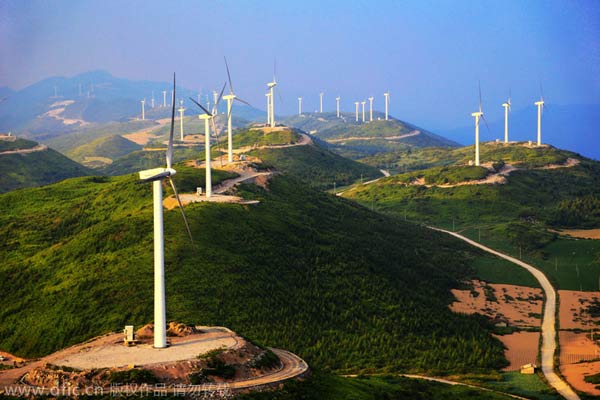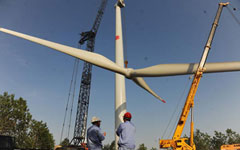 |
|
Wind turbines whirl to generate electricity at a wind farm in Lichuan, Central China's Hubei province, July 27, 2013. [Photo/IC] |
Wind, solar power targets raised, while oil exploration expanded in offshore regions
China has outlined the 13th Five-Year Plan (2016-2020) on energy, which will increase offshore oil and gas exploration and raise output targets of renewables, especially wind and solar power, according to a senior official with the National Energy Administration.
The country will increase offshore oil and gas exploration in the Bohai Sea, the East China Sea and the northern part of the South China Sea, which was newly added to the plan, said He Yongjian, deputy head of NEA's planning department, during an energy forum in late September.
According to the plan, China will focus on raising energy output, improving its energy supply structure and accelerating renewables development.
By the end of 2020, the nation will form five energy production bases in Shanxi province, Ordos Basin, eastern Inner Mongolia, Southwestern China and the Xinjiang Uygur autonomous region.
 |
 |
The country's total wind power installed capacity will reach 200 million kilowatts by 2020, doubling the 12th Five-Year plan period's level, and solar power will be quintupled to more than 100 million kilowatts compared with the target during the 12th Five-Year plan period.
"The wind power price will be equal to the on-grid price of thermal power by 2020, and solar power will be the same as the grid retail price by then, which means the unit wind electricity price will be reduced from the current 0.6 yuan (1 cent) a kilowatt-hour to 0.4 yuan a kilowatt-hour, and solar prices will be cut from 0.9 yuan at present to about 0.6 yuan a kilowatt-hour," said an industry insider who is close to the new energy companies.
The government's subsidies to the renewable energy industry will be capped in the future, said the official.
"The new-energy power generation companies should actively improve technology to cut costs in order to gain market share, instead of depending on government subsidies," he said.
According to China's previous medium and long-term nuclear industry development plan, the nation's nuclear power installation capacity will reach 58 million kilowatts by 2020.
At present, 30 million kilowatts of nuclear capacity are being constructed, though the projects are slightly behind schedule.
According to the NEA's He, 53 million kilowatts of nuclear power installation capacity are expected to be put into operation by 2020.
Energy consumption control will continue to be the major task during the next five-year plan. National energy consumption will reach 4.8 billion metric tons of standard coal by 2020.
The government will continue to increase its natural gas supply to replace coal consumption in coming years.
